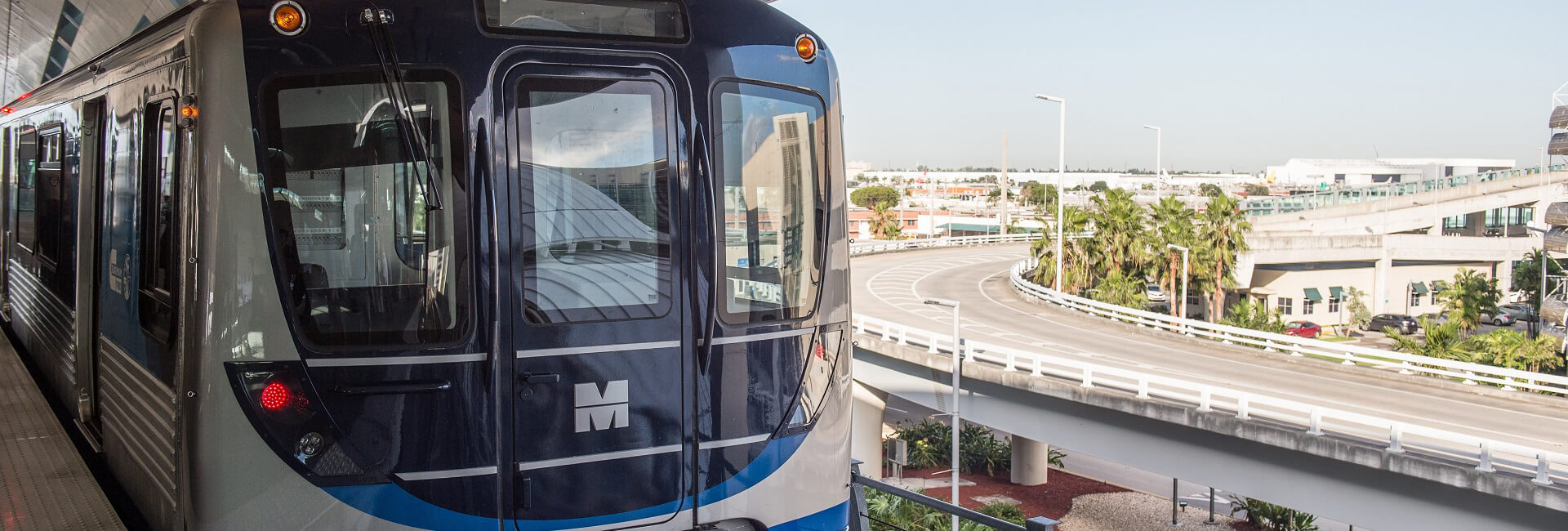Rickenbacker Causeway
The Rickenbacker Causeway is approximately 3.6 miles in overall length with 1.2 miles of bridge structures and 2.4 miles of roadway with the toll facility near its western terminus at Brickell Avenue on the mainland. The eastern terminus occurs at the end of the Bear Cut Bridge where the roadway becomes Crandon Boulevard. The Causeway is named after Edward Rickenbacker, a former World War I pilot and prominent citizen. Its construction was completed in 1947.
The Rickenbacker Causeway includes several distinct segments including the toll plaza, the West Bridge, Hobie Island, the William M. Powell Bridge, Virginia Key, and Bear Cut Bridge. It is the only land access to Crandon Park, Village of Key Biscayne, and Bill Baggs Cape Florida State Park.
Master Plan
The Master Plan will provide the opportunity to solidify recommendations into a coordinated plan that will solidify traffic flow while creating a multimodal safety environment and include continued coordination with the Village of Key Biscayne, MDPD, Miami-Dade Parks, Recreation and Open Spaces Department (MDPROS), and other stakeholders.
The study area extends along SW/SE 26th Road and the Rickenbacker Causeway from the I-95 to the Key Biscayne Village boundary. The study is scheduled to be completed in early 2024.
During the summer of 2024, DTPW will work on refreshing pavement markings, including edge lines, center lines, and other essential road markings from Hobie Beach to Crandon Marina. Learn more.
Phase I Safety Enhancements
The improvements were developed with input from various stakeholders and in response to existing conflicts along the Rickenbacker Causeway specifically located along the exiting U-Turn at the William Powell Bridge. The image below illustrates the action taken in closing the existing U-Turn thru the main highway and providing exclusive access to the U-Turn thru Hobie Island Beach Park North Road.
These improvements were completed in July of 2022.
Phase II Safety Enhancements
The entrance will be relocated approximately 350 feet east of its existing location. The relocation will serve to improve two conflict points:
- It will improve the conflict between vehicular traffic entering the park and cyclists crossing the entrance point
- It will provide a larger distance which increases advanced warning time for vehicles entering the park
Speed Limit Update
Throughout the summer of 2022, DTPW piloted modified speed limits across the Rickenbacker. The pilot yielded valuable information that’s being used to implement safety enhancements such as the establishment of a constant speed limit along the entirety of the Causeway. This change is anticipated to promote safety while facilitating enforcement and setting of driver expectations.
The cumulative impact of these updated speed limits, short-term improvements, and long-term planning for the corridor in coordination with stakeholders will lead to a safer Rickenbacker Causeway for all users.
Bear Cut Bridge Project Development and Environmental (PD&E) Study
A portion of the bridge was constructed in 1944 and will require the replacement of part, all, or major rehabilitation to continue to serve as the only connection between mainland Miami and Key Biscayne. The study will include public outreach and input, stakeholder coordination, design alternative development, cost-benefit analysis, long-range cost estimating, and analysis of the environmental, archaeological, and socioeconomic impact of the design alternatives.
As part of a programmatic approach to the project, the scope will also include budget planning and grant writing services for the final Locally Preferred Alternative selected for the eventual final design.
DTPW, through the Strategic Procurement Office, plans to advertise the Notice for Professional Service for the PD&E in November 2022 and expects selection and the study to take three and a half years.
Design or Design Build should begin in Spring/Summer 2025 with construction expected to begin in 2027.
Hobie Island Beach North Side Shoreline Stabilization
As part of this shoreline protection project, 160 invasive Australian Pine trees must be removed, in accordance with Chapter 19 of the Code of Miami-Dade County. These invasive trees will be replaced with 290 native trees, palms, and additional shrub species. This project will improve and beautify this open space by increasing the resiliency of the shoreline and beach, and improving the parking area, while providing an improved pedestrian and bicycle underpass that connects Hobie Island Beach North to Hobie Island Beach South, underneath the William Powell bridge.
This Project covers 9.6 acres of recreational shoreline along the Rickenbacker Causeway and is currently an area that has been closed to the public due to damages caused by Hurricane Irma in 2017. The construction is scheduled to begin in early 2023.

Transportation and Public Works
Eulois Cleckley
Overtown Transit Village North
701 NW 1st Court,
Suite 1700
Miami, FL 33136
786-469-5675

